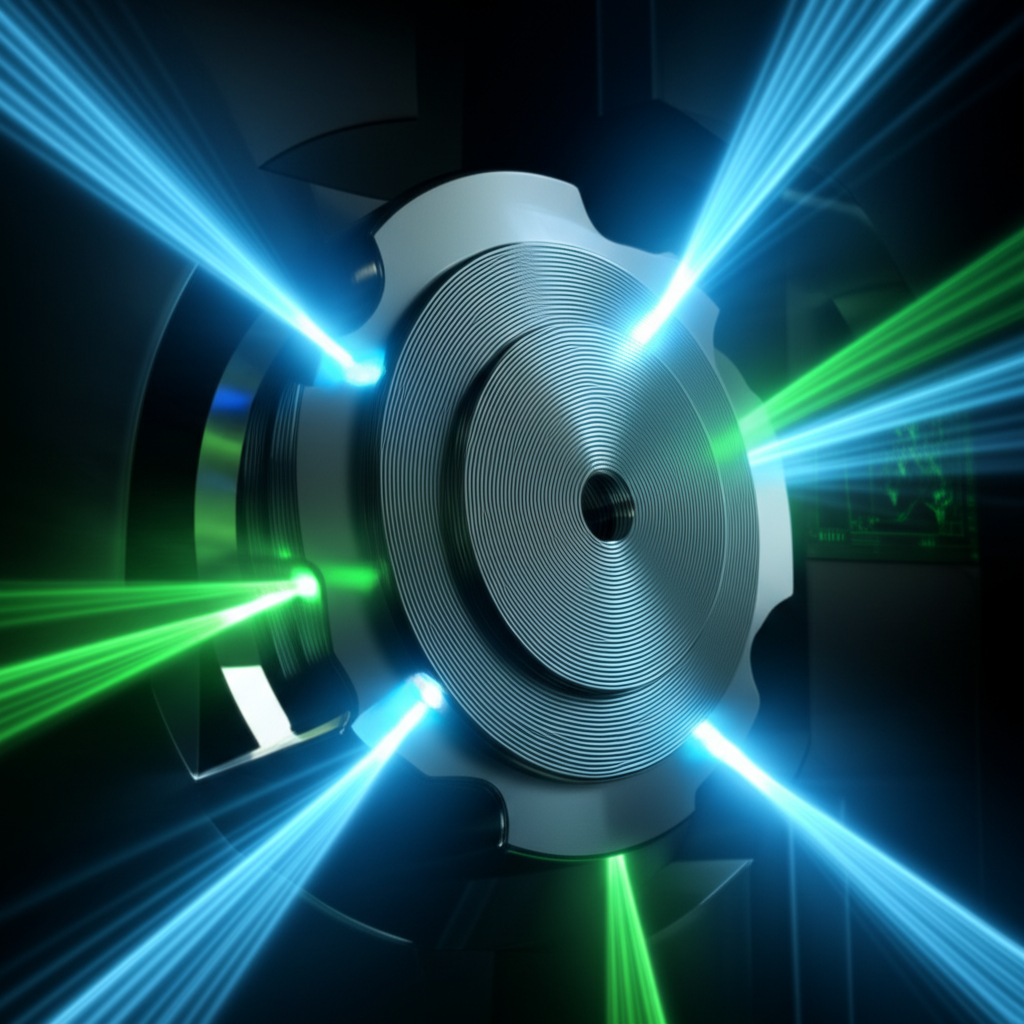Essential NDT Methods for Forged Parts Integrity

TL;DR
Non-destructive testing (NDT) for forged parts involves a series of analysis techniques used to evaluate material properties and identify defects without causing damage. This process is crucial for ensuring the integrity and safety of components in high-stakes industries. The most common methods include Ultrasonic Testing (UT) for internal flaws, Magnetic Particle Inspection (MPI) for surface and near-surface defects in ferromagnetic materials, and Liquid Penetrant Testing (PT) to find surface-breaking cracks.
The Critical Role of NDT in the Forging Industry
Non-destructive testing (NDT), also known as non-destructive examination (NDE), is a vital quality control process in the forging industry. It encompasses a range of inspection methods that assess the integrity and properties of a forged component without permanently altering or damaging it. Unlike destructive testing, which can only be performed on a small sample of a batch, NDT allows for the inspection of 100% of the produced parts, significantly enhancing product safety, quality, and reliability. This capability is indispensable for verifying that components are free from harmful discontinuities before they enter service.
The importance of NDT is magnified in sectors where component failure could lead to catastrophic consequences. Industries such as Oil & Gas, petrochemicals, power generation, and aerospace rely on forged parts to withstand extreme pressure, temperature, and stress. For these critical applications, NDT serves as a fundamental assurance that each part meets stringent industry standards and specifications, such as those from ASME and ASTM. By detecting flaws early, NDT helps prevent accidents, ensures regulatory compliance, and ultimately saves costs by identifying issues before they lead to in-service failures or costly recalls.
The benefits of integrating NDT into the forging workflow are multifaceted. It serves not only as a final quality check but also as a tool for process control and design validation. By identifying defects like cracks, voids, or inclusions, manufacturers can refine their forging processes to reduce waste and improve consistency. This proactive approach to quality assurance helps maintain a uniform level of quality, ensures customer satisfaction, and upholds the manufacturer's reputation for producing dependable, high-performance components.
Core NDT Methods for Forged Part Inspection
Several NDT methods are routinely employed to inspect forged parts, each leveraging a different physical principle to detect specific types of defects. The choice of method depends on the material, the part's geometry, and the potential location of flaws (surface or internal). The following are the most prevalent techniques used in the forging industry.
Ultrasonic Testing (UT)
Ultrasonic Testing uses high-frequency sound waves transmitted into a material to detect internal and surface-breaking flaws. A transducer sends pulses of sound into the forged part, and when these waves encounter a discontinuity—such as a crack, void, or inclusion—they reflect back to a receiver. The time it takes for the echo to return and its amplitude provide detailed information about the flaw's size, location, and orientation. UT is highly effective for volumetric inspection, making it a preferred method for identifying subsurface defects that other methods cannot reach. It is also commonly used for measuring material thickness.
Magnetic Particle Inspection (MPI)
Magnetic Particle Inspection, also referred to as Magnetic Particle Testing (MT), is a highly sensitive method for detecting surface and shallow subsurface discontinuities in ferromagnetic materials like iron, steel, and cobalt alloys. The process involves inducing a magnetic field in the component. If a flaw is present, it disrupts the magnetic field, creating a flux leakage field on the surface. Fine iron particles, either dry or suspended in a liquid, are then applied to the part and are attracted to these leakage fields, forming a visible indication directly over the defect. MPI is quick, cost-effective, and excellent for finding fine cracks, seams, and laps resulting from the forging process.
Liquid Penetrant Testing (PT)
Liquid Penetrant Testing, also known as Dye Penetrant Testing (DPT), is used to locate surface-breaking defects in non-porous materials, including both ferrous and non-ferrous metals. The process begins by applying a colored or fluorescent liquid dye to the clean, dry surface of the forging. The penetrant is drawn into any surface-breaking flaws by capillary action. After a sufficient dwell time, the excess penetrant is removed, and a developer is applied. The developer draws the trapped penetrant back out, creating a visible indication that reveals the defect's location, size, and shape. PT is valued for its simplicity, low cost, and sensitivity to very fine surface cracks and porosity.
Radiographic Testing (RT)
Radiographic Testing involves the use of X-rays or gamma rays to view the internal structure of a forged component. Radiation is directed through the part and onto a detector or film on the opposite side. Denser areas of the material allow less radiation to pass through, appearing lighter on the resulting image, while less dense areas—such as voids, cracks, or inclusions—allow more radiation to pass, appearing as darker indications. While RT provides a clear, permanent record of internal flaws, it is often considered a less common choice for forged parts because the types of defects it excels at detecting (like porosity) are less prevalent in forgings compared to castings.

Choosing the Right NDT Technique for Forgings
Selecting the most appropriate non-destructive testing method is not a one-size-fits-all decision. The choice depends on a careful evaluation of several factors to ensure reliable and efficient inspection. A combination of methods is often used to provide a comprehensive assessment of a forged part's integrity, ensuring all potential flaws are identified.
Key criteria for selection include the material composition, the type and location of the suspected defects, and the part's geometry. For example, Magnetic Particle Inspection (MPI) is only effective on ferromagnetic materials. For non-ferrous alloys, Liquid Penetrant Testing (PT) is a suitable alternative for surface flaws. The primary distinction often comes down to detecting surface versus subsurface defects. PT is strictly for surface-breaking flaws, while MPI can detect both surface and near-surface issues. For deep internal defects, Ultrasonic Testing (UT) is the superior choice, offering detailed volumetric analysis.
The geometry and surface condition of the forging also play a significant role. UT can be challenging to perform on parts with complex shapes or rough surfaces, which may require special probes and skilled operators. In contrast, the smoother surface finish typical of forged parts makes them well-suited for both PT and MPI, which provide more reliable results on less porous surfaces compared to castings. For industries with stringent quality requirements, such as the automotive sector, partnering with a specialized supplier is crucial. For instance, providers of certified automotive components, like the IATF16949 certified services offered by Shaoyi Metal Technology, integrate these precise NDT methods into their quality control systems to guarantee component reliability from prototyping to mass production.
To simplify the selection process, the following table summarizes the primary applications and limitations of the core NDT methods for forged parts:
| NDT Method | Primary Application | Defect Location | Key Advantages | Limitations |
|---|---|---|---|---|
| Ultrasonic Testing (UT) | Detecting internal flaws, thickness measurement | Subsurface | Highly accurate for internal defects, portable | Requires skilled operators, difficult on rough surfaces |
| Magnetic Particle Inspection (MPI) | Detecting cracks and seams in ferrous materials | Surface & Near-Surface | Fast, cost-effective, highly sensitive to fine cracks | Only for ferromagnetic materials |
| Liquid Penetrant Testing (PT) | Finding surface-breaking cracks and porosity | Surface-Breaking | Simple, inexpensive, works on non-ferrous materials | Only detects flaws open to the surface, requires clean parts |
| Radiographic Testing (RT) | Identifying internal voids and material changes | Subsurface | Provides a permanent visual record of defects | Health and safety precautions required, less common for typical forging defects |
Frequently Asked Questions
1. What are the 4 main non-destructive tests?
The four most common non-destructive testing methods, particularly relevant to industrial applications like forging, are Ultrasonic Testing (UT), Magnetic Particle Testing (MT or MPI), Liquid Penetrant Testing (PT), and Radiographic Testing (RT). Each method uses a distinct physical principle to identify different types of flaws without damaging the component being inspected.
2. How is forged steel tested for quality?
Forged steel is tested for quality using a combination of methods. Non-destructive testing is a crucial step, with Magnetic Particle Inspection (MPI) being one of the most common ways to detect surface cracks. Ultrasonic Testing (UT) is also widely used to ensure there are no internal defects. In addition to NDT, quality control for forged steel often includes visual inspection, hardness testing, and dimensional verification to ensure the part meets all chemical and physical property specifications.
3. What are the most common NDT methods?
Beyond the primary four (UT, MT, PT, RT), other common NDT methods include Visual Testing (VT), which is often the first step in any inspection process, and Eddy Current Testing (ET), which uses electromagnetic induction to find flaws in conductive materials. The specific methods used depend heavily on the industry, material type, and the critical nature of the component being tested.
 Small batches, high standards. Our rapid prototyping service makes validation faster and easier —
Small batches, high standards. Our rapid prototyping service makes validation faster and easier — 
